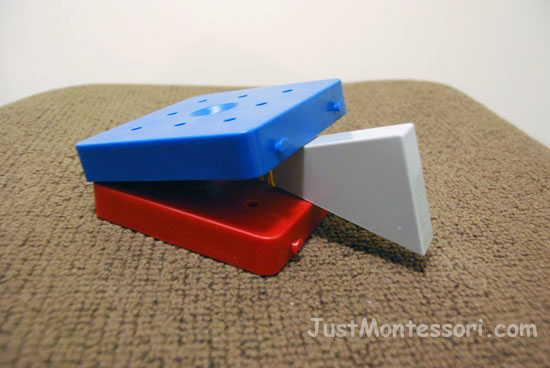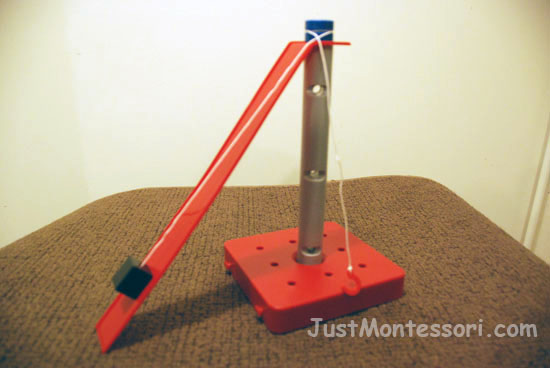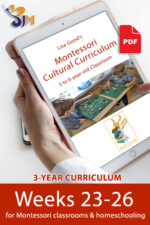Book choices for today:
What is a Wedge Lloyd Douglas
What is a Plane Lloyd Douglas
Inclined Planes in Action Gillian Gosman
Ramps and Wedges Angela Royston
Wedges in Action Gillian Gosman
Fold Me a Poem Kristine O’Connell George
Seeing Into Tomorrow Richard Wright
Science: (first circle)
Need for lesson – A model of an inclined plane and a wedge.
Science 59
We have two more simple machines to talk about today. The wedge and inclined plane. What is a wedge? A wedge is an object with at least one slanting side ending in a sharp edge. Now we have learned that simple machines help us to do a work easier. Looking at this model of a wedge, what job do you think it could help us to do? It reminds me of the doorstop we use to hold open the door. Other kinds of wedges are things like a knife, scissors, and a nail.
This is an inclined plane. An inclined plane is any slope or ramp. It is called an inclined plane because it is a plane, which is a flat surface, and it is inclined or sloped, not level. What kind of work do you think an inclined plane can help us to do? Because the inclined plane has a slanted surface it can help people and things move between higher and lower places. A wheel chair ramp can help people in a wheel chair get from the ground up to their house if they have stairs. What about a skateboard ramp? It helps you go from the ground up to the top of the ramp on your skateboard. Maybe we need to get some rocks into the back of a truck to take them somewhere. A ramp from the ground up into the back of a truck can be used with a wheel barrow to get the rocks up into the truck. A slide at the park is another kind of inclined plane simple machine!


Geography: (second circle)
Talk with the children about syllables. Play a name game where you clap out the syllables of each child’s name, for example if child’s name is Rebecca. Clap out Re – bec- ca. Rebecca has three syllables. Go around the circle and clap out each child’s name, counting the syllables.
“Haiku” is a traditional form of Japanese poetry. Haiku poems consist of three lines. The first and last lines of the poem have 5 syllables and the middle line has 7 syllables. The lines in the poem often do not rhyme. Here is a little poem to help the children to remember.
I am first with five
Then seven in the middle
Five thento the end
Go over the syllables with the children in this little poem. Read other Haiku poems to the children and have fun counting out the syllables.
Examples:
Flying
High up in the sky
They flop, flip, plop, skip and fly
But I always fall!
Spring
A breeze is blowing
Crickets chirp and birds twitter
My heart leaps with joy
-
 (G) Weeks 23-26$25.00
(G) Weeks 23-26$25.00


